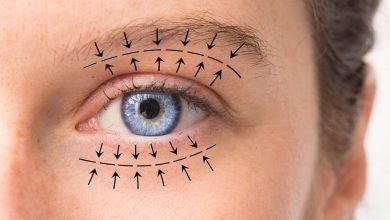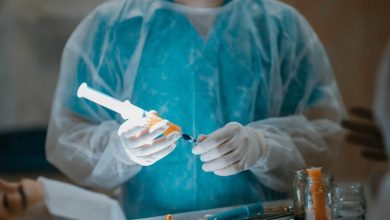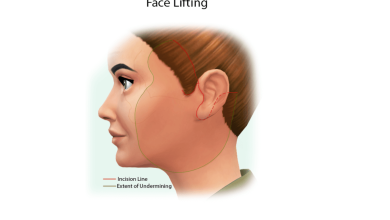How is Gynecomastia Diagnosed?
“How is gynecomastia diagnosed” or “how a gynecomastia is recognized” is one of the most frequently asked questions about male breast enlargement, which is a common disorder that can lead to serious psychological problems. The first symptom of gynecomastia is that the breasts grow larger than normal, take on a female breast appearance, and become visible even from under clothes.
When the breast is examined by gently squeezing it between the thumb and other fingers, a rubbery mass under the nipple is felt because there is some growth in the mammary glands in addition an increase in fat cells in gynecomastia cases.
This mass is not felt in cases of pseudogynecomastia, which is only due to adipose tissue accumulation, and the breast has a softer and more homogeneous consistency. Externally observed symptoms, as well as an examination by a relevant specialist doctor, some blood tests, and radiological imaging methods, can be listed under the heading “How is gynecomastia diagnosed?”
What are the Symptoms of Gynecomastia?
Gynecomastia symptoms have an important place under the heading “How is gynecomastia diagnosed?” In addition to the visibly large breast size, pain, tenderness in the breasts, and tenderness and pain when rubbing the nipples on clothing can be observed, especially as the breast sizes increase during adolescence. There may be discharge from the nipples.
However, these symptoms are not specific to gynecomastia. In some cases, a benign or malignant breast mass with similar symptoms can be observed. Therefore, the symptoms should not be considered unimportant.
How Is Gynecomastia Diagnosed?
The vast majority of gynecomastia cases does not involve disease and are diagnosed as “idiopathic gynecomastia.” However, male breast enlargement, whether unilateral or bilateral, can also be a sign of other serious conditions.
It is definitely not appropriate to read the answers to the question “how is gynecomastia diagnosed?” on the internet and try to make a diagnosis on your own. Men who notice breast enlargement should definitely consult an Endocrinology and Metabolic Diseases Specialist and get examined.
The onset time of breast growth, whether it is unilateral or bilateral, the rate of growth, the drugs that the person is using, nutritional supplements, and substances are all questioned during this examination. For instance, a history of a unilateral breast mass that is growing quickly could be a sign of breast cancer. Your physician will examine your entire body, not just your breasts, to look for any indications of potential underlying diseases that may cause gynecomastia.
There are numerous diseases that may cause male breast enlargement. In most cases, other causes may include anabolic steroid use for bodybuilding, alcohol or drug use, in addition to diseases that cause an imbalance between male and female hormones (estrogen).
After questioning and examining the possible factors mentioned above, your physician will order some advanced blood tests and radiological imaging examinations to reveal the possible causes. The hormone levels in the blood will also be assessed through these tests. To better reveal the growing mass in the breast, ultrasonography or other imaging methods can be used.
How is Gynecomastia Diagnosed by Manual Palpation?
The question of how to diagnose gynecomastia by manual palpation is specifically asked. Place your hand on your waist on the side you want to examine and tighten it to contract your pectoral muscle. Then gently squeeze your breast between your thumb and fingers. A rubbery mass beneath the nipple indicates enlarged milk ducts or a breast mass. Simply touching this mass will not reveal whether it is benign or malignant.
In pseudogynecomastia cases, a softer and homogeneous breast is palpable in this manual examination. Because a possible malignant tumor cannot be ruled out with this manual examination alone, do not attempt to make a diagnosis at home and instead consult the relevant physician.
Is Gynecomastia Confused With Breast Cancer?
Under the heading of how is gynecomastia diagnosed, the potential underlying breast diseases which can be confused with gynecomastia should also be considered. The formation and growth of a mass in the male breast tissue can sometimes be confused with gynecomastia. For this reason, when late breast enlargement, a palpable mass, nipple recession, visual changes in the breast skin, etc. are noticed, they shouldn’t be ignored and should be discussed with a general surgeon competent in the treatment of breast diseases.
If no mass suggestive of cancer is found in the breast as a result of the examinations and the breast enlargement is diagnosed to be gynecomastia, an Aesthetic, Plastic, and Reconstructive Surgery specialist is consulted for aesthetic treatment.
What is Pseudogynecomastia?
“Pseudogynecomastia” is typically observed not only in the breasts but also in other parts of the body in overweight people, and it is only caused by the accumulation of excess adipose tissue. “The question of how is pseudogynecomastia diagnosed?” comes into focus here.
Both gynecomastia and pseudogynecomastia cause an increase in breast size, but pseudogynecomastia causes no enlargement of the mammary glands. In general, pseudogynecomastia is observed bilaterally in the form of localized fat accumulation in overweight people, that is, in both breasts, while gynecomastia may be more prominent in one breast in some cases.
In the light of all this information, I can answer the question “How is gynecomastia diagnosed?” as follows: “If you observe a single or bilateral growth on your breasts that visually disturbs you, if you feel a mass when you touch it, do not try to make a diagnosis on your own and consult an Endocrinology and Metabolism Diseases specialist”.
References
How Is Gynecomastia Diagnosed?
If a person notices unilateral or bilateral breast enlargement, he should consult an Endocrinology and Metabolic Diseases specialist. As a result of the evaluation of the anamnesis, family health history, the results of the physical examination, blood tests, and radiological examinations such ultrasonography, it is revealed whether there is a breast enlargement and whether there is a special underlying disease or factor.
First and foremost, any condition that may cause breast enlargement should be identified and treated. Then surgical treatment comes into focus. If, as is commonly the case, no specific cause of breast enlargement can be identified and “idiopathic gynecomastia” is diagnosed, then direct surgical treatment can be planned.




